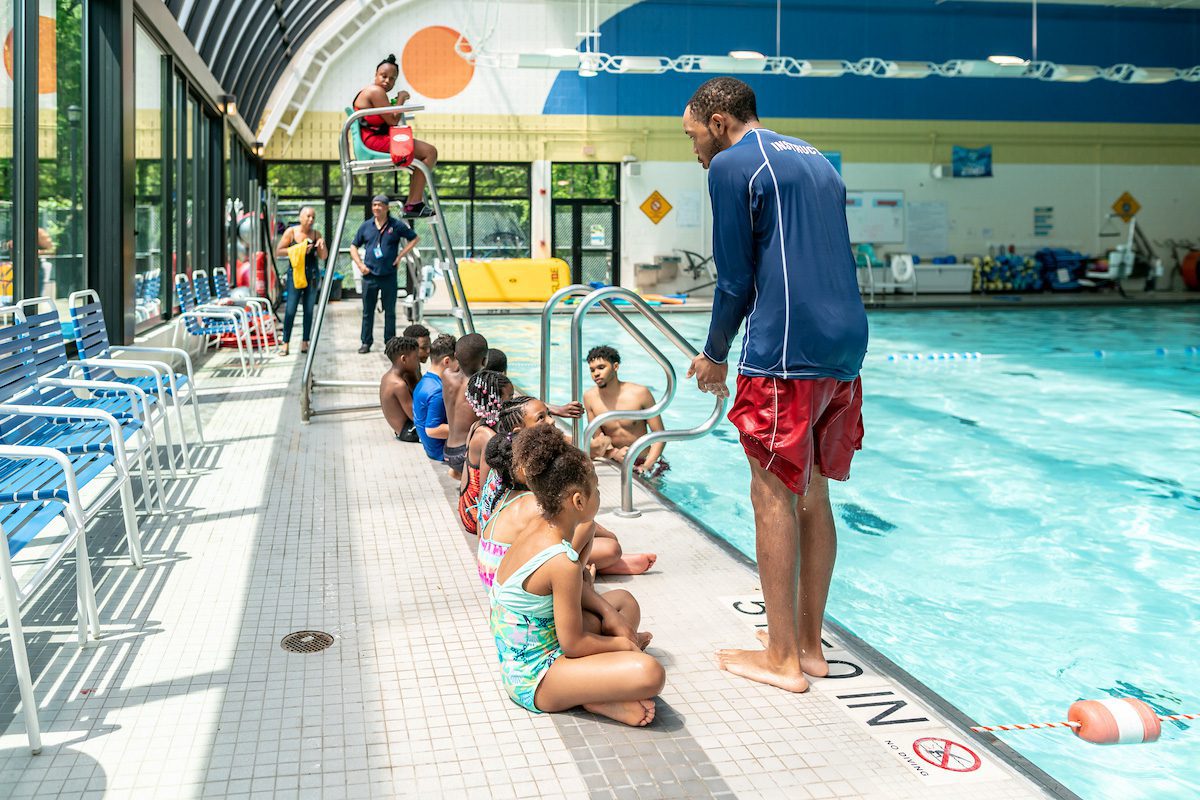Here are public swimming facilities near you! Whether you’re a seasoned swimmer or just looking to beat the heat, this article will provide you with all the information you need to find the best public swimming spots in your area. We’ve done the research and compiled a list of top-notch swim facilities that cater to all ages and skill levels. So, grab your swimsuit and dive into this ultimate guide to make the most of your swimming experience!
1. Public Swimming Spots
Discover the best public swimming spots in your area with our comprehensive guide. Whether you’re a beginner or a seasoned swimmer, we’ve got you covered with a curated list of top-notch swim facilities that cater to all skill levels.
Swimming is not only a great way to beat the heat but also offers a plethora of health benefits. From improving cardiovascular fitness to enhancing muscle strength, diving into the water can have a positive impact on your overall well-being.
In this guide, we’ll provide you with all the information you need to make the most of your swimming experience. We’ll explore the safety measures implemented at public swimming pools, offer tips on what to pack for a swimming session, and guide you on how to choose the perfect swim facility for your needs.
Whether you’re looking for a family-friendly pool or seeking a place to focus on your fitness goals, our guide will help you find the right public swimming pool near you. So, grab your swimsuit, put on your goggles, and let’s dive in!
2. Benefits of Public Swimming: The Surprising Health Benefits of Swimming
Swimming is more than just a fun activity; it offers a wide range of health benefits that can positively impact your overall well-being. Here are some of the surprising advantages of incorporating swimming into your fitness routine:
A. Cardiovascular Fitness:
Swimming is a fantastic way to improve your cardiovascular health. It engages your entire body, including your heart and lungs, resulting in increased endurance and improved circulation. Regular swimming sessions can help lower the risk of heart disease and improve overall cardiovascular fitness.
B. Muscle Strength and Tone:
Swimming is a low-impact exercise that works out multiple muscle groups simultaneously. The resistance of the water provides a challenging workout, helping to build strength and tone muscles. It particularly targets the arms, shoulders, back, core, and leg muscles.
C. Joint Health and Flexibility:
Unlike high-impact activities like running, swimming is gentle on the joints. The buoyancy of the water reduces the strain on your joints, making swimming an excellent option for individuals with joint pain or conditions like arthritis. Moreover, the fluid movements in water help improve flexibility and range of motion.
D. Weight Management:
Swimming is an effective calorie-burning exercise that can aid in weight management. It boosts metabolism and helps burn a significant number of calories, making it an ideal choice for those aiming to shed excess pounds or maintain a healthy weight.
E. Stress Relief and Mental Well-being:
Diving into the water can have a calming and therapeutic effect on the mind. Swimming releases endorphins, the feel-good hormones, which can reduce stress and anxiety. It provides an opportunity to disconnect from daily worries and enjoy a mindful, meditative experience.
These are just a few of the many benefits swimming offers. Whether you’re looking to improve your fitness level, manage weight, or simply relax and unwind, swimming is a fantastic activity with numerous advantages for your physical and mental health.
3. Safety Measures at Public Swimming Pools: Ensuring a Safe Swimming Experience
When it comes to public swimming pools, safety should always be a top priority. These facilities implement various measures to ensure a secure swimming experience for all visitors. Here are some of the safety precautions you can expect at public swimming pools:
A. Trained Lifeguards:
Public swimming pools employ trained lifeguards who are responsible for monitoring the pool area and ensuring the safety of swimmers. Lifeguards are trained in water rescue techniques and CPR, ready to respond in case of emergencies.
B. Clear Signage and Rules:
Public pools have clearly posted signs and rules that outline important guidelines and regulations. These signs may include instructions on diving depth, prohibited activities, and any specific pool rules to ensure the safety of all swimmers.
C. Regular Water Quality Checks:
Public swimming pools conduct regular water quality checks to maintain clean and safe swimming conditions. These tests help ensure that the water is properly chlorinated and balanced, minimizing the risk of waterborne illnesses.
D. Adequate Pool Maintenance:
Public pool facilities follow a maintenance schedule to ensure the pool’s proper functioning and safety. This includes regular cleaning, inspection of pool equipment, and maintaining appropriate water temperature and filtration systems.
E. Emergency Equipment and First Aid:
Public swimming pools are equipped with essential emergency equipment, such as lifebuoys and reaching poles, to assist in water rescues if needed. Additionally, first aid kits are readily available to address any minor injuries or emergencies that may occur.
It’s important to note that while public swimming pools take significant measures to ensure safety, individuals visiting these facilities should also adhere to basic safety practices. This includes supervising children, avoiding running on wet surfaces, and following all posted rules and guidelines.
By prioritizing safety at public swimming pools, both the facility staff and visitors contribute to creating a secure and enjoyable swimming environment for everyone.
4. What to Pack for a Public Swimming Session: Essential Gear for Your Swimming Adventure
Before heading to a public swimming pool, it’s important to pack the necessary gear to ensure a comfortable and enjoyable swimming experience. Here are some essential items you should consider bringing:
A. Swimwear:
Invest in a well-fitting swimsuit that allows for freedom of movement. Opt for materials that are durable and quick-drying to enhance your comfort in and out of the water.
B. Towel:
Pack a large, absorbent towel to dry off after your swim. Consider bringing an extra towel to sit or lie on by the poolside.
C. Goggles:
If you prefer swimming with clear vision, bring a pair of goggles. They protect your eyes from chlorine and help you see underwater.
D. Swim Cap:
A swim cap is not only useful for keeping your hair out of your face but also helps with reducing resistance in the water. If you have long hair, consider a silicone or latex cap for better coverage.
E. Flip-Flops or Pool Shoes:
Wear flip-flops or pool shoes to protect your feet from hot surfaces, slippery areas, and potential infections in public showers or changing rooms.
F. Sunscreen:
Apply waterproof sunscreen with a high SPF to protect your skin from harmful UV rays, even if the swimming pool is partially shaded. Reapply as needed during your swimming session.
G. Water Bottle and Snacks:
Stay hydrated by bringing a water bottle to sip on during breaks. Pack some light snacks, such as energy bars or fruits, to refuel after your swim.
H. Extra Clothing and Plastic Bags:
Bring a change of clothes to wear after your swim. Pack a plastic bag to store your wet swimwear and towel to prevent them from soaking other items in your bag.
By packing these essential items, you’ll be well-prepared for a comfortable and enjoyable swimming session at a public pool. Remember to check specific facility rules and guidelines to ensure you’re complying with any additional requirements they may have.
5. Finding the Perfect Public Swimming Pool: Tips for Choosing the Right Swim Facility
With numerous public swimming pools to choose from, finding the perfect one for your needs can be overwhelming. Here are some essential tips to help you select the right swim facility:
A. Location:
Consider the proximity of the swimming pool to your home, workplace, or other frequently visited areas. Choosing a pool that is conveniently located can make it easier to incorporate swimming into your routine.
B. Pool Size and Amenities:
Assess the size of the pool and the amenities available. If you’re looking for a lap swimming experience, ensure the pool has designated lanes. Check if the facility offers additional features, such as diving boards, water slides, or a separate children’s pool.
C. Pool Maintenance and Cleanliness:
Look for a swimming pool that is well-maintained and kept clean. Consider visiting the facility beforehand to assess the water quality, cleanliness of changing rooms, and overall hygiene standards.
D. Operating Hours and Availability:
Check the operating hours of the public swimming pool to ensure they align with your schedule. Some facilities may have specific hours dedicated to lane swimming, aqua fitness classes, or family swim sessions.
E. Cost and Membership Options:
Consider the cost of admission or membership fees for the swimming pool. Compare different facilities to find one that offers reasonable pricing options that fit within your budget.
F. Safety Measures and Lifeguard Presence:
Ensure the swim facility has proper safety measures in place, such as trained lifeguards on duty during operational hours. A visible lifeguard presence can provide an added sense of security.
G. Reviews and Recommendations:
Read online reviews and seek recommendations from friends, family, or local community groups. Hearing about others’ experiences can help you make an informed decision about the swim facility.
By considering these factors, you can narrow down your options and find the perfect public swimming pool that meets your preferences and needs. Remember to visit the facility, if possible, to get a firsthand look before committing to a membership or regular visits.
6. Public Swimming for Kids: Making a Splash – Public Swimming for Children
Introducing children to public swimming pools can be a wonderful experience that promotes water safety, physical activity, and fun. Here are some key considerations and tips for making the most of public swimming with kids:
A. Safety Measures:
Prioritize safety by ensuring the swimming facility has appropriate safety measures in place, such as shallow areas for younger children, lifeguards, and clear signage indicating safety rules.
B. Swim Lessons:
Consider enrolling your child in swim lessons to build their water confidence and swimming skills. Many public pools offer swimming lessons specifically designed for different age groups and skill levels.
C. Water Play Areas:
Look for public swimming pools that have dedicated water play areas for children. These areas often include features like splash pads, fountains, and shallow pools, providing a safe and enjoyable water experience for young kids.
D. Pool Rules and Etiquette:
Teach your child about pool rules and proper swimming etiquette, such as not running on slippery surfaces, taking turns on slides, and being respectful of others in the pool area. Instilling these habits early on promotes a safe and enjoyable environment for everyone.
E. Floatation Devices:
Depending on your child’s age and swimming abilities, consider using floatation devices like arm floats, life jackets, or swim vests. These aids can provide an extra layer of safety and confidence during their time in the water.
F. Sun Protection:
Protect your child’s delicate skin from the sun’s harmful rays by applying sunscreen with a high SPF, dressing them in UV-protective swimwear, and providing a wide-brimmed hat and sunglasses.
G. Fun Activities:
Encourage your child to participate in fun activities in the water, such as playing with water toys, practicing swimming skills, or engaging in pool games. These activities make the experience enjoyable and help develop their swimming abilities.
By following these tips, you can create a positive and safe environment for your child to enjoy public swimming pools. It’s a fantastic way to introduce them to the joy of swimming, enhance their water skills, and foster a lifelong love for being in the water.
7. Public Swimming for Fitness Enthusiasts: Maximizing Your Workout at Public Swimming Pools
If you’re a fitness enthusiast looking for a low-impact exercise that offers a full-body workout, public swimming pools are an excellent option. Here’s how you can maximize your fitness routine in the water:
A. Swimming Techniques:
Learn different swimming techniques, such as freestyle, breaststroke, backstroke, and butterfly. Each stroke targets different muscle groups, providing a varied and effective workout.
B. Interval Training:
Incorporate interval training into your swimming routine by alternating between high-intensity and moderate-intensity laps. This helps improve cardiovascular fitness and burns more calories.
C. Water Aerobics and Aqua Fitness Classes:
Participate in water aerobics or aqua fitness classes offered at public swimming pools. These classes combine cardiovascular exercises, strength training, and flexibility exercises for a well-rounded workout.
D. Deep Water Running or Jogging:
Utilize the deep end of the pool for water running or jogging. This low-impact exercise helps build endurance, strengthen muscles, and burn calories without putting stress on your joints.
E. Resistance Training:
Use equipment like aqua dumbbells, resistance bands, or kickboards to add resistance to your swimming routine. This helps build muscle strength and improves overall body tone.
F. Water Treading and Core Exercises:
Engage your core muscles by performing exercises like water treading or flutter kicks. These exercises not only strengthen your core but also improve balance and stability.
G. Incorporate Water Sprints:
Add short bursts of sprints into your swimming routine to increase intensity and challenge your cardiovascular system. Sprinting in water provides resistance, making it an effective high-intensity workout.
Remember to start gradually and listen to your body’s cues. If you’re new to swimming or recovering from an injury, consult with a swim coach or fitness professional to design a workout plan suited to your abilities and goals.
By incorporating these strategies, you can take full advantage of public swimming pools and enjoy an invigorating and effective workout that benefits your overall fitness and well-being.
8. Public Swimming Etiquette: Dos and Don’ts for a Respectful Swimming Experience
When visiting public swimming pools, it’s important to follow proper pool etiquette to ensure a respectful and enjoyable experience for everyone. Here are some essential dos and don’ts to keep in mind:
A. Do Shower Before Entering the Pool:
Take a quick shower before entering the pool to rinse off any sweat, dirt, or lotions. This helps maintain water cleanliness and reduces the introduction of contaminants.
B. Do Respect Others’ Space:
Be mindful of your surroundings and respect others’ personal space. Avoid crowding or swimming too close to others, and be aware of your movements to prevent accidental collisions.
C. Do Follow Pool Rules and Guidelines:
Read and adhere to all posted pool rules and guidelines. These rules are in place to ensure the safety and comfort of all swimmers.
D. Don’t Run on Wet Surfaces:
Avoid running on wet surfaces to prevent slips and falls. Walk carefully and use designated walkways or non-slip mats.
E. Don’t Bring Glass Containers:
Avoid bringing glass containers or bottles to the pool area, as broken glass can cause injuries and pose a safety hazard. Use plastic or other non-breakable containers instead.
F. Don’t Linger on Poolside Furniture:
Be considerate of others and avoid monopolizing poolside furniture. Use only the space you need and allow others to use the furniture as well.
G. Don’t Bring Outside Food or Drinks:
Respect the facility’s policies regarding outside food and drinks. Many public swimming pools have designated areas for consuming refreshments or offer on-site food options.
H. Don’t Use Pool as a Restroom:
It is never acceptable to use the pool as a restroom. Take regular bathroom breaks and encourage young children to use designated facilities.
By following these dos and don’ts, you contribute to a positive swimming environment where everyone can enjoy their time in the pool. Remember, practicing good pool etiquette not only ensures a respectful experience but also promotes safety and hygiene for all swimmers.
9. Public Swimming vs. Private Memberships: Weighing the Pros and Cons
When considering swimming options, you may find yourself deciding between public swimming pools and private memberships. Here’s a breakdown of the pros and cons of each:
A. Public Swimming Pools:
Pros:
- Accessibility: Public swimming pools are often more accessible, with multiple locations throughout the community.
- Affordability: Public pools generally have lower admission fees, making them more budget-friendly for regular visits.
- Community Atmosphere: Public pools offer the opportunity to meet and interact with a diverse range of individuals from your community.
- Varied Amenities: Many public pools have a variety of amenities, such as water slides, diving boards, and play areas, catering to different preferences and age groups.
Cons:
- Crowdedness: Public pools can sometimes be crowded, especially during peak times, which may limit your space and swimming experience.
- Less Privacy: Due to the nature of public swimming pools, you may have less privacy compared to private membership facilities.
- Availability: Public pools may have restricted hours or limited availability for certain activities, such as lane swimming or aqua fitness classes.
B. Private Memberships:
Pros:
- Exclusive Access: Private membership pools often offer a more exclusive and less crowded swimming environment.
- Enhanced Amenities: Private facilities may feature additional amenities like spa services, sauna, or specialized training equipment.
- Flexible Hours: Private pools tend to have extended operating hours and may offer more flexibility in terms of lane availability or class schedules.
- Privacy: Membership pools provide a higher level of privacy, creating a more secluded and intimate swimming experience.
Cons:
- Higher Costs: Private membership fees can be significantly higher compared to public pool admission fees, potentially making it less affordable for regular visits.
- Geographical Limitations: Private pools may have limited locations, making it less convenient if there isn’t one nearby.
- Exclusivity: The exclusive nature of private membership pools may result in a less diverse community atmosphere compared to public pools.
Consider your priorities, budget, and preferences when deciding between public swimming pools and private memberships. Both options can provide an enjoyable swimming experience, so choose the one that aligns best with your needs and circumstances.
10. Frequently Asked Questions about Public Swimming: Your Queries Answered
Are you curious about public swimming but have some questions in mind? Here are some frequently asked questions about public swimming, along with their answers:
A. What are the typical admission fees for public swimming pools?
Admission fees for public swimming pools vary depending on the facility and location. Generally, fees range from a few dollars for a single visit to discounted rates for seniors, children, or frequent visitors. Some pools may also offer seasonal passes or memberships for more affordable access.
B. Are public swimming pools safe in terms of water quality?
Public swimming pools prioritize water quality and safety. They regularly conduct water tests to ensure proper chlorine levels and pH balance. Additionally, filtration systems and maintenance protocols are in place to maintain clean and safe swimming conditions.
C. Can I bring my own food and drinks to public swimming pools?
Rules regarding outside food and drinks vary among different public swimming pools. While some facilities allow you to bring your own snacks and drinks in designated areas, others may have restrictions or on-site food options available. It’s best to check the specific policies of the pool you plan to visit.
D. Are public swimming pools suitable for kids and beginners?
Public swimming pools are suitable for kids and beginners as they often provide shallow areas and designated children’s pools. Many facilities also offer swimming lessons for various age groups and skill levels, making it an ideal environment for learning and building water confidence.
E. What should I do if I’m not a strong swimmer?
If you’re not a strong swimmer, it’s important to prioritize your safety. Stick to areas of the pool where you can touch the bottom or use flotation devices like life jackets or floatation belts. Consider taking swimming lessons to improve your skills and confidence in the water.
F. Can I use public swimming pools for fitness purposes?
Absolutely! Public swimming pools are a great option for fitness enthusiasts. Swimming provides a low-impact, full-body workout that improves cardiovascular endurance, muscle strength, and flexibility. Many pools offer dedicated lap lanes or aqua fitness classes to cater to those seeking a fitness-focused experience.
These are just a few of the common questions people have about public swimming. If you have any specific inquiries or concerns, it’s always best to reach out to the specific pool facility or consult with a staff member for accurate and up-to-date information.
In conclusion, public swimming pools offer a multitude of benefits for individuals of all ages and skill levels. From the health advantages of swimming to the convenience and accessibility of these facilities, there are plenty of reasons to explore public swimming near you.
By following proper pool etiquette, prioritizing safety measures, and considering factors like location, amenities, and cost, you can make the most of your swimming experience. Whether you’re looking for a family-friendly pool, a place to improve your fitness, or simply a refreshing way to beat the heat, public swimming pools have something to offer everyone.
So, dive into the world of public swimming, experience the joy and health benefits it provides, and make a splash in your local swim facility. Grab your swim gear, head to the pool, and enjoy all that public swimming has to offer!

As a passionate water enthusiast, I’ve spent my life exploring the depths of swimming and sharing my experiences with the world. Stroke Swimming is more than just a blog; it’s a deep dive into the world of swimming. Here, you’ll find a treasure trove of information, tips, and insights to help both beginners and seasoned swimmers enhance their skills, knowledge, and appreciation for this timeless art.





